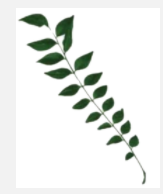A compound leaf with more than thrice pinnate nature is
Multifoliate
Decompound
Quadrifoliate
Tripinnate
The correct Answer is:B
To solve the question regarding a compound leaf with more than thrice pinnate nature, we can follow these steps:
1. Understand the Terminology:
- A compound leaf is a leaf that is divided into multiple leaflets.
- Pinnate refers to the arrangement of leaflets along a central axis (rachis).
2. Identify the Types of Pinnate Leaves:
- Unipinnate: One level of leaflets.
- Bipinnate: Two levels of leaflets.
- Tripinnate: Three levels of leaflets.
- Decompound: More than three levels of leaflets.
3. Analyze the Question:
- The question specifically asks for a compound leaf with more than thrice pinnate nature.
4. Determine the Correct Term:
- Since the question specifies "more than thrice," we look for the term that describes this condition. The correct term for a leaf that has more than three levels of leaflets is decompound.
5. Choose the Correct Option:
- Among the options provided (multifoliate, decompound, quadrifoliate, tri-pinnate), the correct answer is decompound.
Final Answer:
The compound leaf with more than thrice pinnate nature is called decompound.
---
- A compound leaf is a leaf that is divided into multiple leaflets.
- Pinnate refers to the arrangement of leaflets along a central axis (rachis).
- Unipinnate: One level of leaflets.
- Bipinnate: Two levels of leaflets.
- Tripinnate: Three levels of leaflets.
- Decompound: More than three levels of leaflets.
- The question specifically asks for a compound leaf with more than thrice pinnate nature.
- Since the question specifies "more than thrice," we look for the term that describes this condition. The correct term for a leaf that has more than three levels of leaflets is decompound.
- Among the options provided (multifoliate, decompound, quadrifoliate, tri-pinnate), the correct answer is decompound.
The compound leaf with more than thrice pinnate nature is called decompound.
Topper's Solved these Questions
- LEAFBOOK - DINESH PUBLICATION ENGLISHCHAPTER - LEAFEXERCISE - CYG
10 Videos
- KINGDOM PROTISTA (UNICELLULAR EUKARYOTES)BOOK - DINESH PUBLICATION ENGLISHCHAPTER - KINGDOM PROTISTA (UNICELLULAR EUKARYOTES)EXERCISE - CHECK YOUR GRASP
19 Videos
- LOCOMOTION AND MOVEMENTBOOK - DINESH PUBLICATION ENGLISHCHAPTER - LOCOMOTION AND MOVEMENTEXERCISE - CHECK YOUR GRASP
10 Videos
Similar Questions
Knowledge Check
Interhalogen compounds are more reactive than the individual halogens because
Athey are prepared by direct combination of halogensBX-X' bond is weaker than X-X or X' -X' bondsCthey are thermally more stable than halogensDthere is a large difference in their electronegativity.
A compound leaf is shown in the diagram.

Select the option with correct identification of the type of leaf and its example.
View SolutionPinnately compound leaf is found in
View SolutionTripinnate compound leaf is the feature of
View SolutionExplain why:
Interhalogen compounds are more reactive than the related elemental halogens.
View SolutionA leaf with more stomata on lower surface belongs to
View SolutionExplain why interhalogen compounds are more reactive than their constituent elements.
View SolutionIn palmately compound leaf, the leaflets are attached at the (a)____ as in (b)______
View Solution
